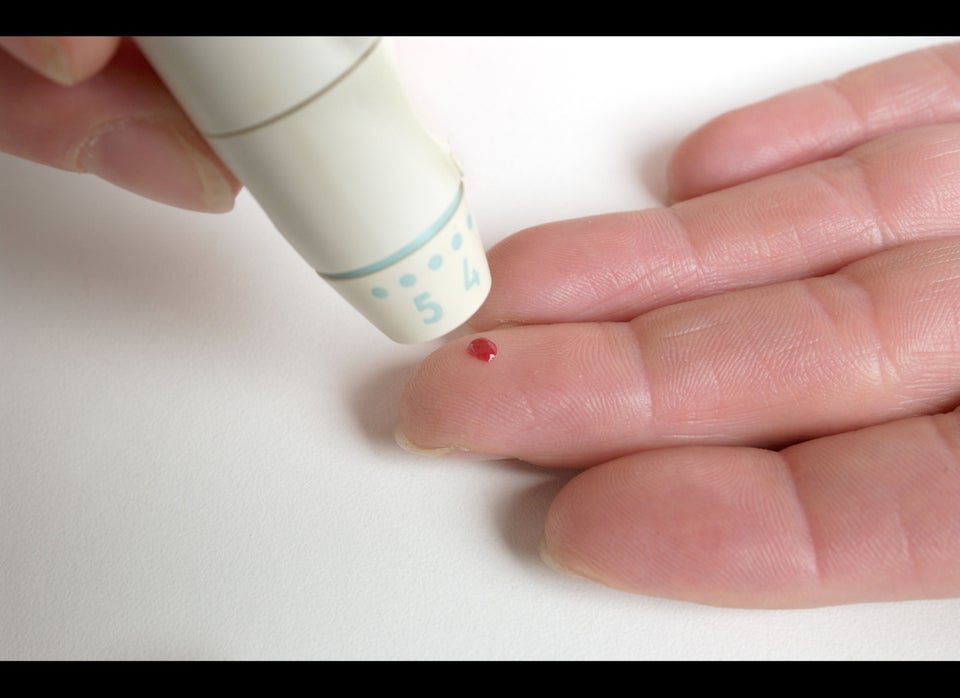Typically, when we think about enduring an injury, we imagine we have to do something -- and usually do it wrong -- to bring on the pain.
But sometimes discomfort is due to doing nothing whatsoever. Case in point: Sitting at your sedentary desk job.

Spending too much time sitting has been linked to a higher risk of heart attack, stroke, metabolic syndrome and earlier death, and even the most dedicated of exercise regimens won't undo all the damage.
"We were built to move," Steven Conway, Ph.D., a chiropractor and attorney in Athens, Wisconsin, and a spokesperson for the American Chiropractic Association, tells The Huffington Post. "The non-moving is the hardest thing on us."
Most of us can probably recall a time when our backs ached or our heads pounded after a tough day at the office, but sometimes the cause of the pain isn't so obvious. Below you'll find some of the most common sitting-related ailments and Conway's tips on how to protect yourself, stat.
If your low back or hips hurt...
The problem: You're probably slouching -- and your chair might not be at the right height, either.
The fix: Adjust your seat to maintain the normal curve in the lower spine. Tilt the seat of the chair to angle slightly down. You should be able to fit one or two fingers between your knees and the edge of the seat to alleviate pressure on the legs. Also consider using an alternative desk chair that incorporates movement or supportive cushions behind the lower back.
If your mid back hurts...
The problem: You're probably slouching, and you're definitely not moving enough.
The fix: Move more. A lot more. If you can, once every 20 minutes. Because your head, neck and shoulders are typically forward as you sit in your chair, focus on stretching the opposite way. Look up at the ceiling, stick the chest out and roll the shoulders back. Sitting up straight will keep your shoulders and mid-back in this neutral position naturally.
If your hands or wrists hurt...
The problem: Stretching and twisting your hands and fingers to type, and typing with furious speed and force. The pain and fatigue here may also be due to carpal tunnel syndrome, which can include tingling, numbness and shooting pains through the hands and wrist.
The fix: If your keyboard is angled up, switch the stand on the back of it to keep it laying flat. Adjust the height of your chair to keep your elbows as close as possible to a 90-degree angle and keep your arms close to your sides.
If your neck hurts...
The problem: You're cradling the phone between your shoulder and your ear, you're slouching and you're probably looking downward at a computer screen. (You might also feel pain in your jaw or get frequent headaches.)
The fix: Use a speakerphone, headphones or a headset if you're going to be talking and typing at the same time. Adjust the height of your computer screen -- even if that just means stacking it on top of some books -- so that your chin is even with the center of the screen. Position the screen straight in front of you so you're not constantly turning to the side.
If your knees hurt...
The problem: Pressure from your seat or from crossing your legs can lead to pain, numbness or tingling, or your legs are too short to plant your feet firmly on the ground.
The fix: Adjust your chair so the seat tilts slightly forward or adjust the height of your chair altogether. Make sure you can fit one or two fingers between your knees and the edge of the seat. Try putting your feet on a stool or a stack of books if they don't reach the ground, and cross the legs at the ankles rather than at the knee.
